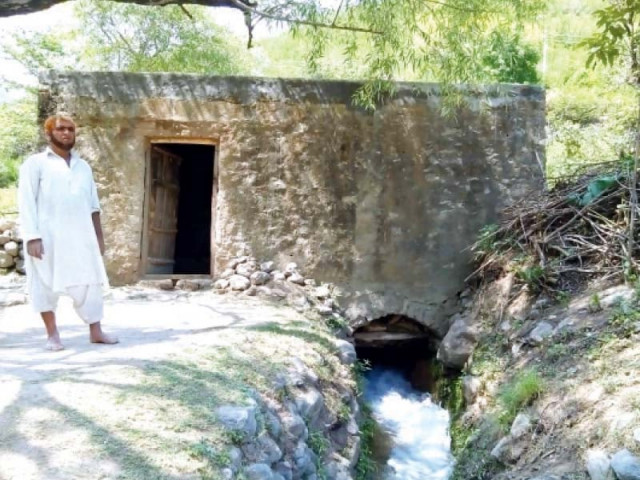
The environment-friendly watermills are scattered across villages on the outskirts of Islamabad — Shahdara Khurd, Shahdara Kalan, Kamlari, Phulgran and Gokina. The valleys are dotted with streams and canals.
These mills are powered by fast-flowing water channeled from streams, which turn the heavy grindstones, producing flour. Traditional watermills do not directly pollute the atmosphere, nor do they require electricity or fossil fuels.
One such watermill is operated by Ghulam Shabbir Awan, 58, in Shahdara Khurd, a famous tourist area which is thronged by residents of the twin cities during the hot summer.
He has been operating the watermill since his childhood and is determined to continue his forefathers’ business.
Residents of surrounding villages visit Awan’s jandar. He charges in kind rather than cash, taking a share of the flour from his customers.
“I take 6kg of flour for 40kg of grain as payment from my customers,” Awan said, claiming it was less than what most flour mills charged. The watermill is not Awan’s primary source of income. His day job is as an electrician at Quaid-i-Azam University (QAU).
Awan said, “I wish to keep my family’s traditional business alive and after me, through my children.”
He said that the flour ground in a watermill was natural and did not spoil as easily as mass-produced flour.
Awan claimed that his family was attached with the business for the past nine generations. Before him, his father, Karam Din Awan, grandfather, Manga Khan, great grandfather, Anwar Khan, and Anwar’s father, Fazal Din, were attached with the business, he said.
“The watermill is a symbol of our centuries-old culture, which is gradually disappearing due to the introduction of new technology,” said Javaid Akhtar, a resident of Shahdara Khurd.
“There is a need to keep this alive in order to introduce future generations to these environment-friendly mills,” he added.
Published in The Express Tribune, July 12th, 2015.

















COMMENTS
Comments are moderated and generally will be posted if they are on-topic and not abusive.
For more information, please see our Comments FAQ